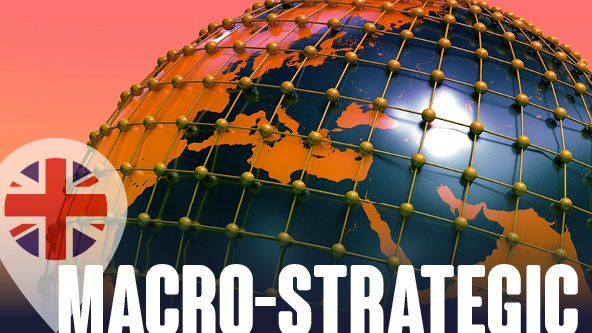Organisational Change
Podcast: The Changing Role of the HR Leader
In this episode, Richard Hargreaves and Gillian Pillans discuss CRF’s 2025 research, The Changing Role of the HR Leader, which explores how HR must evolve to meet today’s complex challenges. They highlight five key shifts: HR as business leaders, shaping organisational strategy, bringing in external insight, leading on AI and transformation, and adopting a risk mindset. The conversation stresses the need for commercial acumen, digital fluency, and proactive leadership on tech and people risks—urging HR leaders to stay curious, strategic, and future-ready.
Transcript
Richard: Welcome to the CRF podcast. I’m Richard Hargreaves, Managing Director at CRF, and I’m joined by CRF’s Research Director, Gillian Pillans. Today, we’re exploring our latest research from March 2025, The Changing Role of the HR Leader. If you’re an HR leader trying to make sense of today’s complex world—and how to stay ahead—this one’s for you. Gillian, welcome.
Gillian: Hi Richard – looking forward to this insight.
Richard: Let’s start with the basics. Why did we choose to do this piece of research?
Gillian: There’s a real inflection point for the HR profession right now. During the pandemic, HR was front and centre. But since then, there’s been a shift—some question whether HR is delivering business value. That’s coupled with external pressures: geopolitical instability, the impact of AI and shifting employee expectations.
So, we felt it was time to ask: how is the HR leader’s role evolving, and what do we need to do to stay relevant and future-fit?
Richard: And a major theme in the report is the importance of context. Why is that so critical?
Gillian: Because we’re no longer operating in a predictable environment. There’s constant disruption—economically, technologically, socially. Leaders need to understand how external shifts affect their organisation’s strategy and workforce. HR has a role in building what we call organisational vigilance—that’s the ability to sense what’s coming and adapt quickly. That includes developing foresight and bringing the outside in.
Richard: So what are the biggest shifts we’re seeing in the HR leader’s role?
Gillian: We highlight five key areas:
To start, HR as business leaders first – HR needs to influence business strategy, not just deliver people processes.
Second, Working on the organisation – shaping culture, performance, and operating models, not just supporting individuals.
Third, Bringing the outside in – being networked, externally focused, and scanning the horizon.
Fourth, Technology and transformation – leading on AI adoption, skills strategy, and job redesign.
And fifth, Risk mindset – embedding risk thinking into all people decisions.
Each of these areas comes with specific recommendations. HR leaders need to develop commercial acumen, influence at board level, and build their teams’ capabilities in data, design, and digital.
Richard: Let’s unpack that first one – being a business leader first. What does that actually involve?
Gillian: It starts with understanding how your business makes money. What drives competitive advantage? Where’s the growth coming from? Then, HR needs to align its work to those priorities—whether that’s talent, transformation, or cost optimisation.
A great quote from the report says: “Every HR initiative should be driving revenue, productivity, reducing cost or enabling change.” And our advice? HR leaders need to be fluent in the language of business. That means knowing your profit and loss, being able to talk margins, and tying HR interventions directly to business outcomes.
Richard: So this goes beyond just “supporting” the business?
Gillian: Exactly. It’s about co-owning the strategy. Being in the room when direction is being set. HR leaders should be contributing to decisions about investment, expansion, tech adoption—and making the case for people solutions that deliver commercial value.
Richard: You also talk about “working on the organisation”. What’s changing there?
Gillian: We’re encouraging HR to shift its focus leftward—earlier in the strategic process. Rather than reacting once decisions are made, HR should shape operating models, organisation design, and performance systems up front.
For example, a recommendation from the report is for HR to build capability in organisation design—so we’re not just slotting people into roles, but designing roles and teams that drive agility and execution. And performance culture isn’t about appraisals—it’s about alignment, systems thinking, and behaviour change.
Richard: Let’s touch on capability building – and for a change not about the rest of the business but about HR itself. Why is developing the capability of the HR function so vital right now?
Gillian: Because the demands on HR are changing fast. The report shows that only 32% of CHROs are promoted internally—and that’s worrying. It tells us that many aren’t building strong succession pipelines
So what can HR leaders do? Create structured development plans, Offer cross-functional or business-side experiences, Encourage data and digital fluency and Use mentorship and exposure to exec-level decision-making.
This isn’t about HR qualifications—it’s about business credibility. One practical recommendation? Assign someone in HR to be accountable for talent development within the function. That makes it a strategic priority, not an afterthought.
Richard: Let’s talk tech and AI. It’s obviously a huge disruptor. What role should HR be playing in this space?
Gillian: A central one, Technology’s changing everything from job design to skills needs. HR must lead on strategic workforce planning, identify skills gaps, and build pathways for upskilling and redeployment. There’s also a strong ethical angle. AI and automation bring risk – bias, transparency, dehumanisation. HR has to be the conscience here. The recommendation is clear: HR must develop guidelines for ethical, people-centric tech adoption. And we also need to upskill ourselves. HR tech isn’t just for the IT team—it’s core to how we deliver value.
Richard: You also discuss risk. That’s not a word traditionally associated with HR.
Gillian: But it should be. Risk isn’t just about legal compliance anymore – it’s reputational, technological, operational. When you unpick any business risk you will most likely find a large people element. For example: are we managing the risks around AI usage? Do we understand the implications of our DEI stance—or lack thereof? Are we keeping our top talent in critical roles, or are we quietly haemorrhaging capability?
Our recommendation is that HR adopts a risk lens. That means anticipating, not just responding. We need to bring people risks to the executive table—whether that’s attrition, burnout, or culture drift—and have mitigation plans in place.
Richard: Gillian, this is very high-level content. So, for someone listening to this on their commute, trying to distil it all—what are the three or four actions they should take away?
Gillian: Really great question. Here’s a quick summary:
1. Build your business fluency – Understand your organisation’s value drivers and link HR to business results.
2. Get upstream – Influence strategy, organisation design and performance at the source, not just implementation.
3. Develop your team – Invest in next-gen HR capability with structured development, business exposure and digital literacy.
4. Lead on tech and risk – Own the people side of AI, transformation and organisational risk.
And finally – be curious. Keep learning. HR leaders who stay relevant are the ones who are most open to change.
Richard: Gillian, thank you. This has been a masterclass in the future of HR leadership. There’s so much here for our community to take away and apply.
Gillian: Thanks Richard – and I’d really encourage listeners to read the full report. There’s even more detail, and it’s full of real-world examples and practical tools.
Richard: You can download the full report at www.crforum.co.uk and search ‘The Changing Role of the HR Leader’. It’s a must-read as we all prepare for what’s next. Thanks for listening.
We’ve used AI to produce this podcast as part of our ongoing commitment to innovation and to offer content in more accessible formats for our network – building on themes from our previous report Harnessing AI and HR Tech to Enable Business Success.





